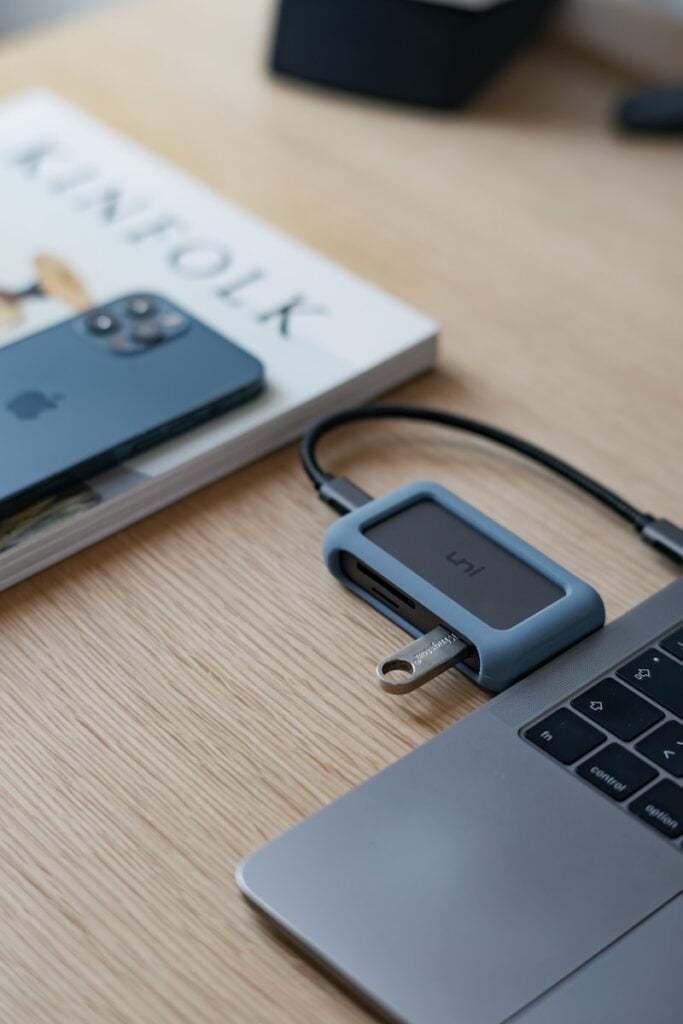
A USB hub is a device that expands a single USB port on a computer into several. It allows multiple USB devices to be connected to a computer simultaneously, without the need for separate USB ports. USB hubs come in a range of sizes and designs, from small desktop models to larger, more advanced hubs with numerous ports.
A powered USB hub is a type of USB hub that requires an external power source to operate. This means that it can provide additional power to connected USB devices that require more power than what the computer’s USB port can provide. Devices like external hard drives, printers, and scanners typically require more power than what a standard USB port can provide, so a powered USB hub is necessary to ensure they work correctly.
There are several instances where a powered USB hub may be necessary. For example, if you have several USB devices that require more power than a computer’s USB port can provide, a powered hub can help ensure they all work correctly. Additionally, if you have a laptop or other mobile device with limited USB ports, a powered hub can help you connect more devices without having to unplug and switch them out constantly.
Choosing a powered USB hub
A laptop or PC USB port can supply up to 500mA (milliamps) of power at 5V (volts) for USB 2.0, and up to 900mA at 5V for USB 3.0. However, some devices, such as external hard drives, scanners, or high-power devices, may require more power than what a USB port can provide. In such cases, a powered USB hub can be used to supply the additional power needed.
When choosing a powered USB hub, there are several factors to consider:
- Number of ports: Choose a powered USB hub with enough ports to accommodate all your devices.
- Power supply: Ensure the powered USB hub has a suitable power supply that can supply enough power to all your devices. The power supply should match the voltage and amperage requirements of the devices you will be connecting.
- Speed: If you have high-speed devices, such as USB 3.0, make sure the powered USB hub supports the same speed.
- Portability: If you need to take the powered USB hub with you, choose a compact and lightweight model.
- Durability: Look for a powered USB hub that is built with sturdy materials and has a strong design to withstand daily use.
- Price: Powered USB hubs can range in price depending on the number of ports, power output, and features. Consider your budget and the features you need to choose the best option.
Consider the following scenario:
Let’s say you have a powered USB hub with a power output rating of 5V/2.4A (12 watts). You want to connect three devices to the hub: an external hard drive that requires 0.8A, a scanner that requires 1A, and a printer that requires 0.5A.
To calculate the total power required, you need to add up the amperage (A) for each device. In this case, the total amperage required is 0.8A + 1A + 0.5A = 2.3A.
Next, you need to make sure that the powered USB hub can supply enough power to all devices. In this scenario, the powered USB hub can supply up to 2.4A, which is more than the 2.3A required by the three devices. Therefore, the powered USB hub should be able to handle all three devices simultaneously without any issues.
Please note that the above scenario assumes that the plugged in devices are drawing all their power needs from USB hub (and your computer), and does not have their own independent power source. In case of a plugged in device already has its own power source, the power load to the USB hub can be ignored as it will only passing data instead of power through the USB hub.
It is important to note that the power output rating of the powered USB hub is the maximum amount of power it can supply. It does not mean that it will always supply that amount of power, as the actual power supplied will depend on the power requirements of the devices connected to the hub.
Ignoring the power requirements of your USB devices and the power output rating of your powered USB hub can lead to several consequences, such as:
- Unreliable device performance: If a device is not getting enough power, it may not function correctly or may experience intermittent issues. For example, an external hard drive may disconnect randomly or may not show up on your computer if it is not getting enough power.
- Damage to devices: If a device is not getting enough power, it may try to draw more power than it should, which can lead to overheating and damage. This can result in the device malfunctioning or becoming permanently damaged.
- Overloading the powered USB hub: If you connect too many devices that require more power than the hub can supply, it can lead to overloading the hub, causing it to shut down or even damage it.
- Safety hazards: Overloading the powered USB hub or using a power supply that does not match the device’s requirements can also pose safety hazards, such as electrical shocks, short-circuits, or fires.
In summary, a USB hub is a useful device that expands a single USB port into multiple, while a powered USB hub provides additional power to connected devices that require more power than what a computer’s USB port can provide. It is essential to have a powered USB hub in situations where you have multiple power-hungry USB devices that need to be connected at once.










































